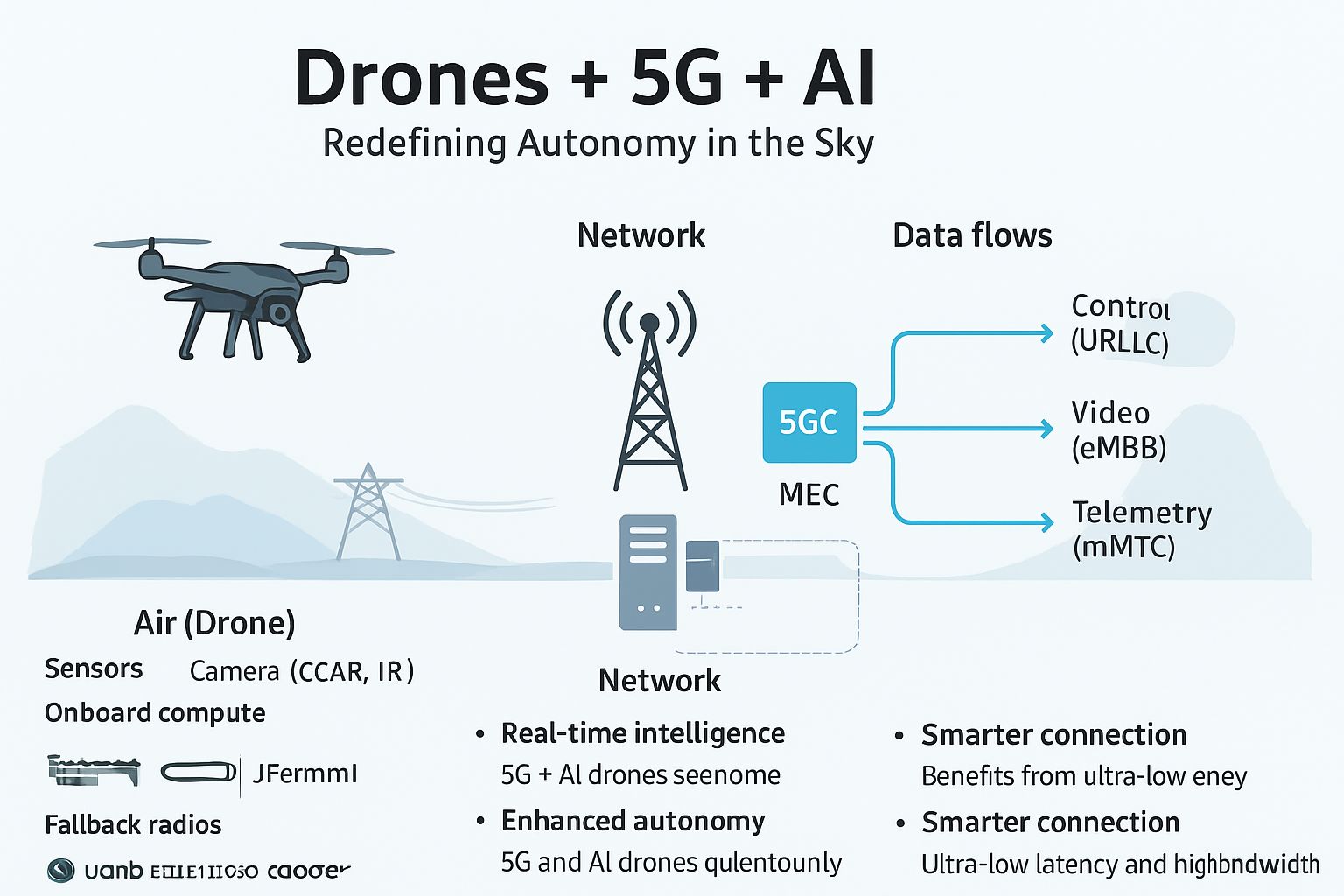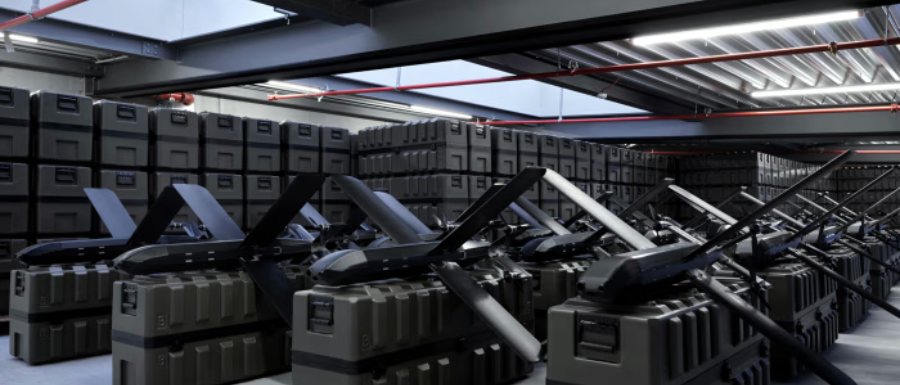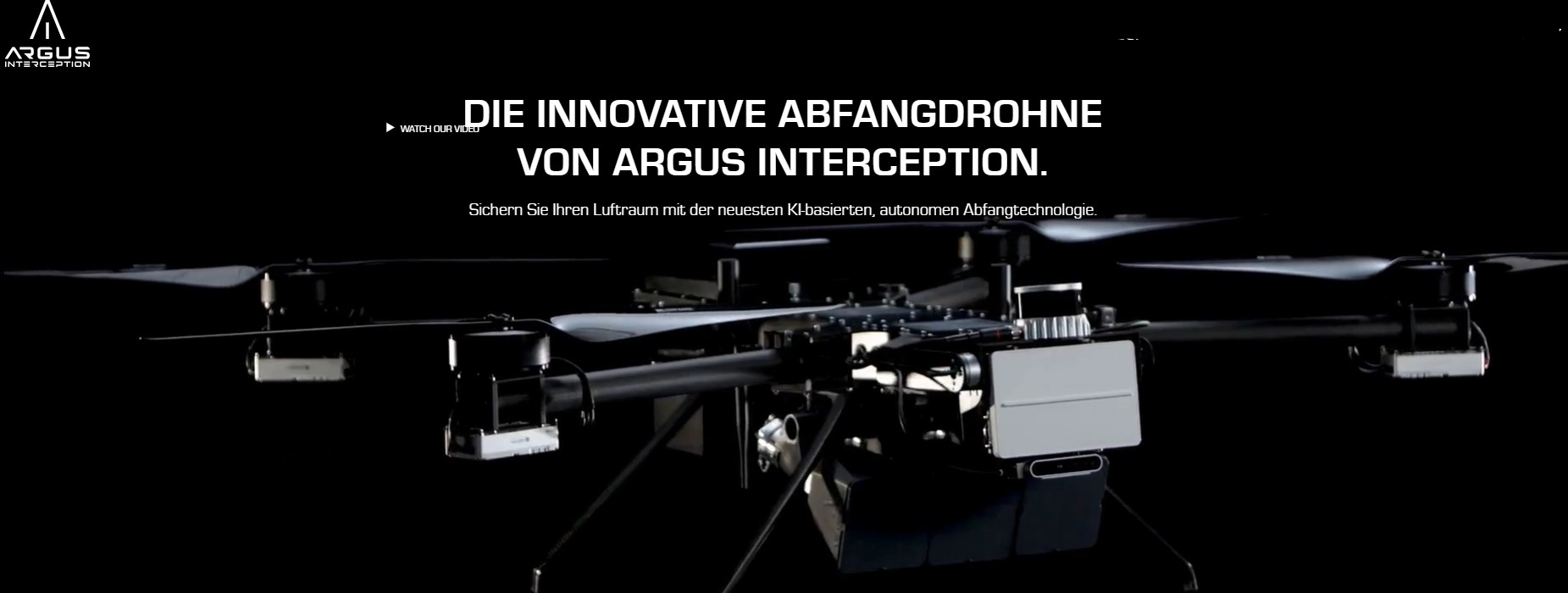Drones, 5G, and AI – Redefining Autonomy in the Sky

Drones are no longer just aerial cameras; they are evolving into intelligent, autonomous machines capable of performing complex tasks in real time. At the heart of this transformation is the fusion of 5G connectivity and artificial intelligence (AI) at the edge, enabling drones to perceive, decide, and act autonomously.
End-to-End Architecture
The modern drone ecosystem integrates three critical layers: the airborne platform, the network, and the data flow infrastructure.
- Air (Drone): Equipped with sensors such as cameras, LiDAR, and GNSS, drones rely on onboard computing platforms like Jetson or ARM processors, coupled with 5G modems and fallback radios for reliable connectivity.
- Network: A 5G gNB (base station) and 5GC (core network) provide ultra-low-latency and high-throughput connections. Mobile Edge Computing (MEC) enables heavy AI processing close to the drone.
- Data flows: Command and control require URLLC (ultra-reliable low-latency communication), high-definition video leverages eMBB (enhanced mobile broadband), and telemetry and sensor data use mMTC (massive machine-type communication).
Key 5G Features for Drones
5G brings capabilities that were impossible with previous networks:
- URLLC: Guarantees real-time control, essential for safety-critical maneuvers.
- eMBB: Supports high-throughput HD video streams for situational awareness.
- Network slicing: Isolates traffic streams for command, video, and telemetry.
- MIMO & Beamforming: Ensures stable aerial links even in congested airspace.
- Sidelink (PC5): Enables drone-to-drone coordination for swarm operations.
AI-Driven Perception and Decision Loops
AI enables drones to see, understand, and react autonomously:
- Perception: Object detection, terrain segmentation, and anomaly spotting.
- Localization: Fusion of GNSS, visual SLAM, and LiDAR for precise positioning.
- Planning: Model-predictive control and reinforcement learning guide autonomous behavior.
- Anomaly Detection: AI flags faults in real time to prevent accidents.
Inference Strategy:
- Onboard: Safety-critical tasks like collision avoidance.
- Edge/MEC: Heavy AI tasks, including fault detection and map merging.
- Cloud: Model training, fleet analytics, and long-term optimization.
Swarm Coordination
Drones can operate in leader/follower or consensus-based swarms, using 5G multicast slices or direct sidelink communication to share state information in real time. Applications include:
- Agriculture: Coordinated crop monitoring.
- Disaster Relief: Multi-drone search and mapping.
- Smart Logistics: Autonomous delivery fleets.
Security and Safety
5G + AI drones require robust security measures:
- 5G AKA & eSIM authentication for network security.
- End-to-end encryption using SRTP/IPsec.
- Secure boot & OTA updates for software integrity.
- GNSS spoofing/jamming detection and inertial fallback for navigation.
Operations and Orchestration
Edge platforms often run lightweight Kubernetes (k3s) to host inference microservices, while Prometheus/Grafana dashboards monitor latency, throughput, battery usage, and model accuracy. Continuous integration and deployment pipelines allow AI models to be shadow-tested, rolled out via canary deployment, and retrained automatically.
Practical Tradeoffs
Operators must balance several factors:
- Latency vs Accuracy: Onboard processing is faster, edge processing is smarter.
- Bandwidth vs Battery: Compress and selectively stream data to save energy.
- Resiliency vs Cost: Multi-connectivity adds weight and expense but improves reliability.
Example in Action: Powerline Inspection
A drone streams live video to MEC. Edge AI detects a hotspot, flags its GPS location, and sends new waypoints for re-inspection. The cloud logs events and automatically generates a maintenance ticket. This demonstrates how drones, 5G, and AI work together to perform autonomous, mission-critical tasks.
Takeaway
5G provides the connectivity fabric, AI provides the brains, and drones become autonomous, coordinated, and mission-ready. The integration of these technologies opens new possibilities across industries, from energy and logistics to disaster relief.

.png)



